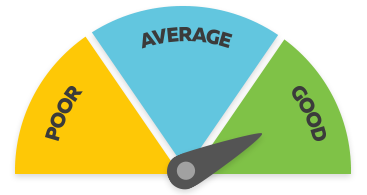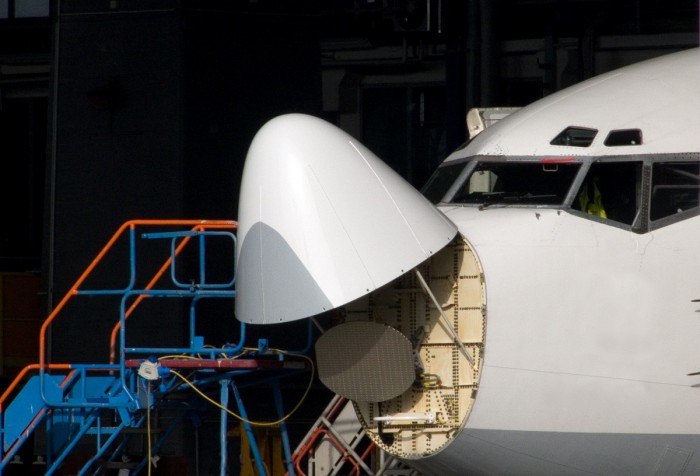Aircraft Maintenance Engineer
Mataaro Whakatika Waka Rererangi
Alternative titles for this job
Aircraft maintenance engineers keep aeroplanes safe. They install, inspect, maintain and repair aircraft, aircraft radio, avionic (electronic), navigation, communication and electrical and mechanical systems.
Pay
Aircraft maintenance engineers usually earn
$49K-$91K per year
Senior aircraft maintenance engineers and supervisors usually earn
$86K-$165K per year
Source: RNZAF, Ringa Hora WDC, and careers.govt.nz research, 2023.
Job opportunities
Pay
Civilian aircraft maintenance engineers
Pay for civilian aircraft maintenance engineers varies depending on experience and level of responsibility.
- Non-qualified and apprentice aircraft maintenance engineers usually earn between $49,000 and $50,000 a year.
- Those with three to four years' experience usually earn between $49,000 and $91,000 a year.
- Senior aircraft maintenance engineers usually earn between $86,000 and $104,000 a year.
- Licensed senior aircraft maintenance engineers in supervisor or manager roles can earn between $95,000 and $165,000 a year.
Royal NZ Airforce aircraft maintenance engineers
Pay for Air Force aircraft maintenance engineers varies depending on experience and level of responsibility.
- Trainee aircraft maintenance engineers receive a recruit's salary of $46,000 a year.
- Graduated aircraft maintenance engineers can earn between $64,000 and $147,000 a year.
Aircraft maintenance engineers in the Air Force also receive benefits such as free medical and dental work, and subsidised food and study.
Sources: Royal NZ Air Force website; Ringa Hora Workforce Development Council; and careers.govt.nz research, 2023.
- PAYE.net.nz website - use this calculator to convert pay and salary information
- Employment New Zealand website - information about minimum wage rates
(This information is a guide only. Find out more about the sources of our pay information)
What you will do
Aircraft maintenance engineers may do some or all of the following:
- inspect and service engines, propellers and airframes, as well as the hydraulic, ventilation/pressurisation, electronic, and mechanical systems of aircraft, to ensure they operate correctly and meet the safety requirements of the original manufacturer, in accordance with Civil Aviation Authority regulations
- read and comprehend instructions for continued airworthiness, in written or diagrammatic form
- diagnose faults
- repair or replace faulty or beyond-safe life parts or systems
- test parts and systems to ensure sure they operate correctly
- use electronic test equipment to view structures without taking them apart (non-destructive testing)
- keep records of repairs.
Licensed aircraft engineers also inspect, supervise and approve the work of other aircraft maintenance engineers.
Skills and knowledge
Aircraft maintenance engineers need to have knowledge of:
- the electronic, mechanical and structural systems and equipment of aircraft
- how aircraft fly (aerodynamics), and how materials react during flight and within the environment
- the maintenance requirements of the aircraft they are servicing
- approved repair techniques and procedures
- safe work practices and aviation safety rules and regulations.
Working conditions
Aircraft maintenance engineers:
- usually work shifts, and may have to be on call during evenings and weekends
- work in hangars or workshops, and on airfields
- work with chemicals such as fuel, oil and hydraulic fluids, which can be hazardous if not handled correctly, and in conditions that may be noisy and stressful
- may travel around New Zealand or overseas.
What's the job really like?
Aircraft maintenance engineer video
Reuben Chapman talks about life as an aircraft maintenance engineer - 2.30 mins.
At that price, it's well worth taking the extra bit of care.
Because you don't want to be responsible for scratching one of these. Hey,
my name's Ruben and I'm an aircraft maintenance engineer.
In the most basic sense I just fix the helicopters.
The general day-to-day tasks are you have all your repetitive
scheduled maintenance. Every so many flight hours,
you have to change a component or look at something,
and then you have unscheduled stuff - so if something happens to break down.
You also have modifications.
You can choose to have different systems installed in your aircraft. I'm just
about to start a new maintenance job on this aircraft behind me.
This is my work pack here,
and it contains pretty much everything that I'm going need to know and do to get
the job done. For this job here, it's preservation, it's going into storage.
First step I'm going to do is preserve the outside of the engine,
with an anti-corrosion fluid. I chose a career as an aircraft
maintenance engineer just because it's something I find really fascinating
and I enjoy the precision behind the work. To be a good engineer,
you need to have that patience and the eye for detail.
So if something goes wrong,
you don't have the opportunity to just pull over to the side of the road and
call AA like you do in your car. When I was in high school,
the careers supervisor set me up at my local airfield and [the] maintenance
facility there. Spent 1 day a week there for the whole year. They were like,
"We suggest you go on this course".
And I did the Level 4 Certificate in Aeronautical Engineering,
which is a 2-year course. After that,
I started my job here and did 3 years as an apprentice.
I came out as a aircraft maintenance engineer or an unlicensed
tradesman. The next step after that is to become a licensed tradesman.
So I'm currently working my way through the exams.
The licensed engineer is one who gets to make the final call and sign an
aircraft out for service.
One of the best bits of it is you get to go out on test flights around the city.
Nothing better than Friday afternoon doing a lap of the city seeing what's
happening downtown. Can never complain about that.
Entry requirements
There are no specific requirements to become an aircraft maintenance engineer.
However, you can complete training and gain a qualification.
ServiceIQ oversees aircraft maintenance engineering apprenticeships.
Different ways to qualify as an aircraft maintenance engineer
To begin an aircraft maintenance engineering traineeship you need to complete an initial qualification such as a:
- New Zealand Certificate in Aeronautical Engineering (Pre-Employment Skills) (Level 3), available from Air New Zealand's Aviation Institute
- Certificate in Aeronautical Engineering Fundamentals (Level 3) through Nelson Marlborough Institute of Technology or the Royal NZ Air Force.
You then need to complete an apprenticeship and gain either of the following:
- a New Zealand Certificate in Aeronautical Engineering (Level 4)
- a Diploma in Aeronautical Engineering (Level 5).
Training as a civilian aircraft maintenance engineer
- Air New Zealand Learning Academy website - information about engineering qualifications
- Nelson Marlborough Institute of Technology website - information about aviation programmes
- Service IQ website - information about aeronautical engineering qualifications
Training as an Air Force aircraft maintenance engineer
- Defence Careers website - information on training as an aircraft technician
- Defence Careers website - information on training as an electronics (avionics) technician
- Defence Careers website - information on training as an aircraft systems technician
Secondary education
NCEA Level 2 in English, maths and science is usually needed to enter tertiary training. Processing technologies, and construction and mechanical technologies may also be useful.
For Year 11 to 13 learners, trades academies and the STAR and Gateway programmes are good ways to gain relevant experience and skills.
These programmes may help you gain an apprenticeship, but do not reduce the amount of time it takes to complete it.
Personal requirements
Aircraft maintenance engineers need to be:
- skilled at solving problems
- good listeners and communicators
- practical, methodical and logical
- patient and accurate
- able to work well under pressure and make good decisions.
Useful experience
Useful experience includes:
- mechanical work
- panelbeating, or work with sheet metal
- electronics or electrical work
- other aviation work.
Physical requirements
Aircraft maintenance engineers need to have a good level of fitness because they spend a lot of time on their feet, working in and around aircraft, and may do heavy lifting. They must have normal colour vision, because some aircraft components are colour-coded. They should also be comfortable working in confined spaces, as they work in cockpits and wheel cavities.
Registration
All aircraft maintenance engineers who supervise aircraft engineering and maintenance work need to be Licensed Aircraft Maintenance Engineers (LAMEs), approved by the Civil Aviation Authority.
Find out more about training
- Air New Zealand Academy of Learning
- (09) 255 5701 - www.airnzlearning.co.nz/ask-a-question- www.airnzlearning.co.nz
- Defence Careers - Air Force
- 0800 1 FORCE (0800 136 723) - www.defencecareers.mil.nz/air-force
- Nelson Marlborough Institute of Technology
- 0800 422 733 - www.nmit.ac.nz
- Service IQ
- 0800 863 693 - intel@serviceiq.org.nz - www.serviceiq.org.nz
What are the chances of getting a job?
Aircraft maintenance engineer vacancies arise when qualified people retire or move overseas to work.
According to Boeing's Pilot and Technician Outlook 2022-41, there will be global demand for 610,000 civil aviation aircraft maintenance technicians over the next 20 years.
Aircraft maintenance engineer will appear on Immigration New Zealand's Green List from March 2024. This means the Government is actively encouraging these skilled workers from overseas to work in New Zealand.
According to the Census, 3,192 aircraft maintenance engineers worked in New Zealand in 2018.
Air New Zealand takes up to 20 trainees a year
Air New Zealand is New Zealand’s largest employer of aircraft maintenance engineers. It runs training programmes through the Aviation Institute in Auckland and Christchurch.
The Aviation Institute accepts between 30 and 50 people a year into its engineering training programme. Air New Zealand then accepts up to 20 trainees a year.
The Royal NZ Air Force also offers traineeships for aircraft maintenance engineers.
Types of employers varied
Most aircraft maintenance engineers work for:
- Air New Zealand, its regional airlines, and other airline and helicopter companies
- aircraft maintenance and design firms
- the Royal NZ Air Force
- the Royal NZ Navy (working on helicopters).
Some aircraft maintenance engineers are self-employed.
Sources
- Air New Zealand Aviation Institute website, accessed March 2023, (www.aviationinstitute.co.nz).
- Aviation.govt.nz, 'Becoming A Licensed Aircraft Maintenance Engineer', March 2021, (www.aviation.govt.nz).
- Immigration New Zealand, 'Changes to Immigration Settings Announced, '23 September 2023 (www.immigration.govt.nz).
- Orloff, M, 'You Thought The Pilot Shortage Was Bad? Try Technicians', October 19,2022, (https://aviationweek.com).
- Ringa Hora Workforce Development Council, careers.govt.nz interview, March 2023.
- Royal NZ Air Force website, accessed March 2023 (airforce.mil.nz).
- Stats NZ, '2018 Census Data', 2019.
(This information is a guide only. Find out more about the sources of our job opportunities information)
Progression and specialisations
Aircraft maintenance engineers may progress to become licensed aircraft engineers, who supervise and sign for completed work.
They may then move into management roles, or do further studies to move into aeronautical engineering.
Aircraft maintenance engineers may specialise in:
- gas turbine engines and other mechanical systems of aircraft
- aircraft structures and frames
- aircraft electrical systems, instruments and radios (avionics).
With further training, aircraft maintenance engineers specialising in avionics may progress to become aeronautical or electronics engineers.
Last updated 24 March 2025


